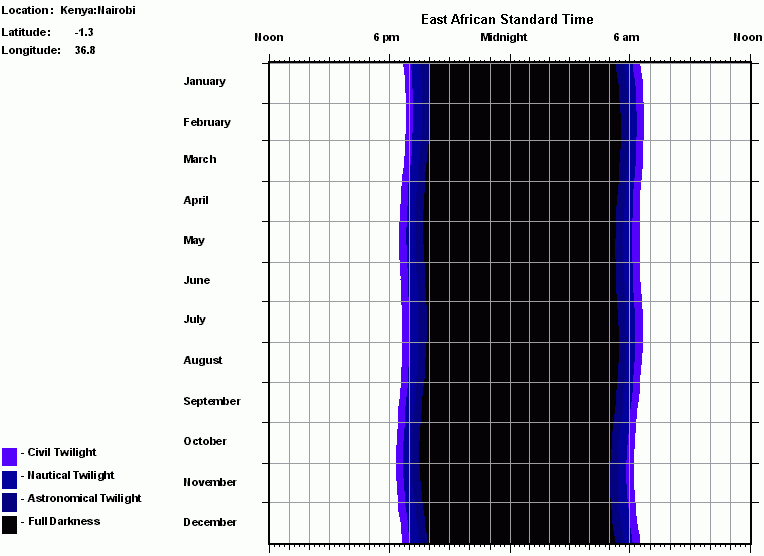


Nairobi, in Kenya, lies almost on the equator. As a result the sun rise and set times hardly change during the year - the small variations are due to the equation of time. Sun rise and set do not occur at 6 am and 6 pm owing to the longitude of Nairobi - it is about 8 degrees west of the standard longitude of 45 degrees used for East African Time. Each degree away in longitude from the standard converts to 4 minutes in time difference in sun rise and set times. Hence at Nairobi sunrise and sunset on average occur about half an hour after 6 am and 6 pm respectively.
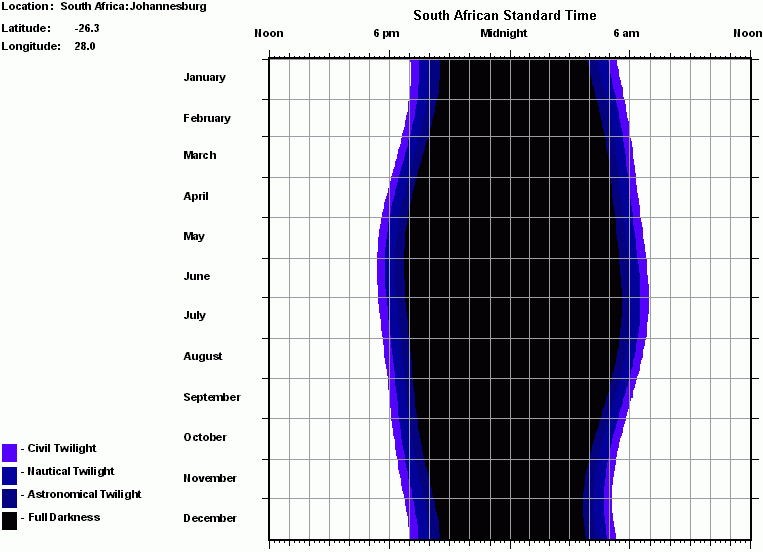
By contrast with Nairobi, Johannesburg in South Africa is outside the tropics, so it shows much more variation in length of day, with longer days and shorter nights in summer, and shorter days and longer nights in winter. the difference in length of daytime between mid-summer and mid-winter is nearly two hours.
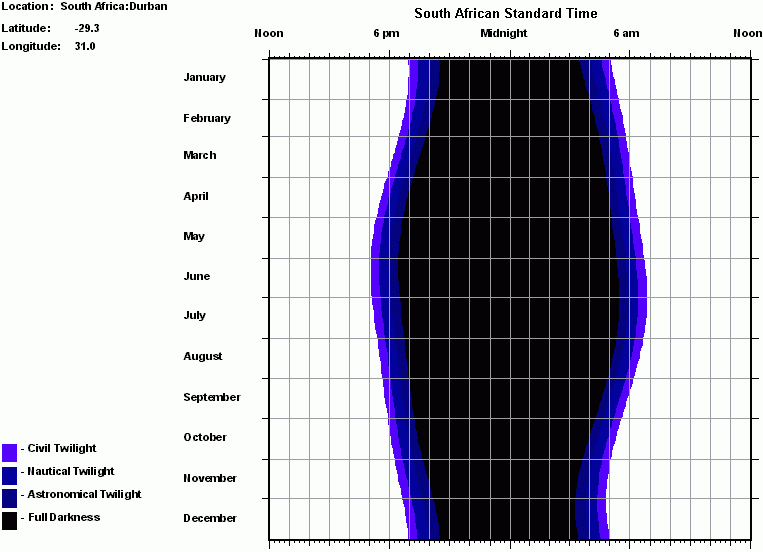
Durban, on South Africa's east coast, is just 3 degrees east and 3 degrees South of Johannesburg, so the sunrise and sunset curves are very similar, but with subtle differences. There are regular calls from Durbanites to introduce summer time in South Africa, to set clocks back one hour. What effect would this have?
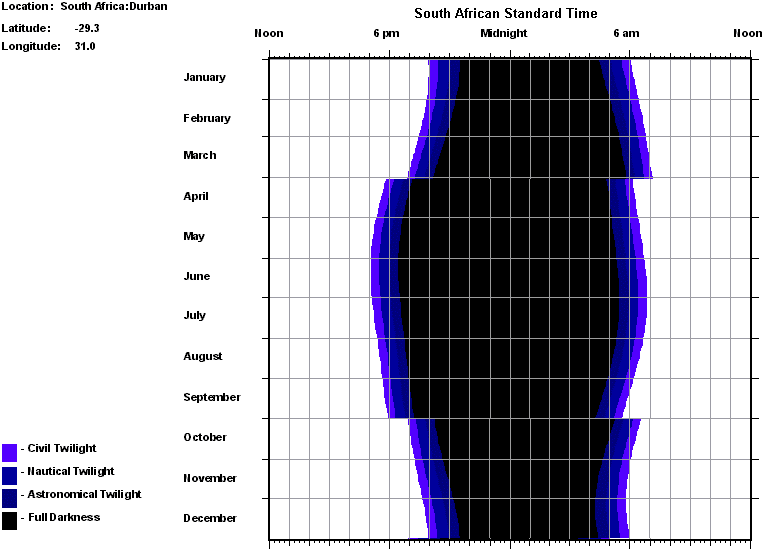
This would make sunrise and sunset occur an hour later during summer, as shown above, to produce in Durban the long sunlight evenings experienced by Cape Town. Of course, in Cape Town the sun would now set at 9pm rather than 8pm at mid-summer. Let's see what Cape Town's graph is actually like:
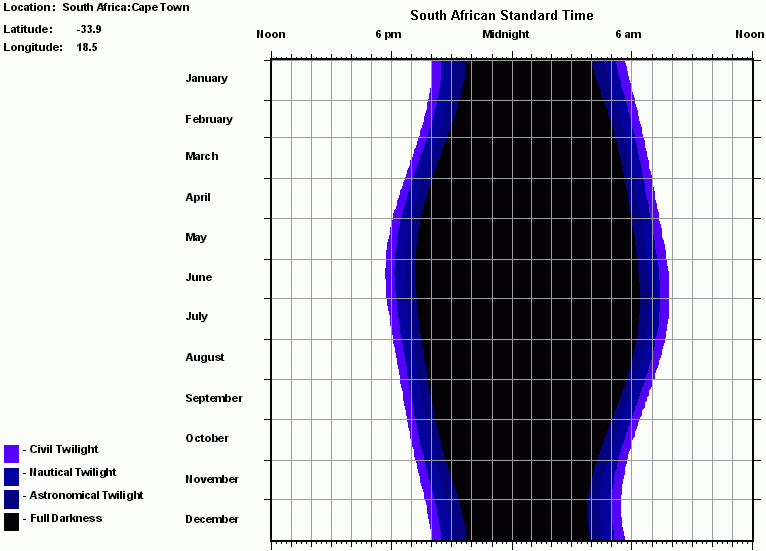
Cape Town, near the southern tip of Africa, is much further west than Durban and Johannesburg. Sunrise and set occur much later - sunset in midsummer is an hour later than in Johannesburg, for example. But conversely in mid-winter the sun rises only a little before 8 am.
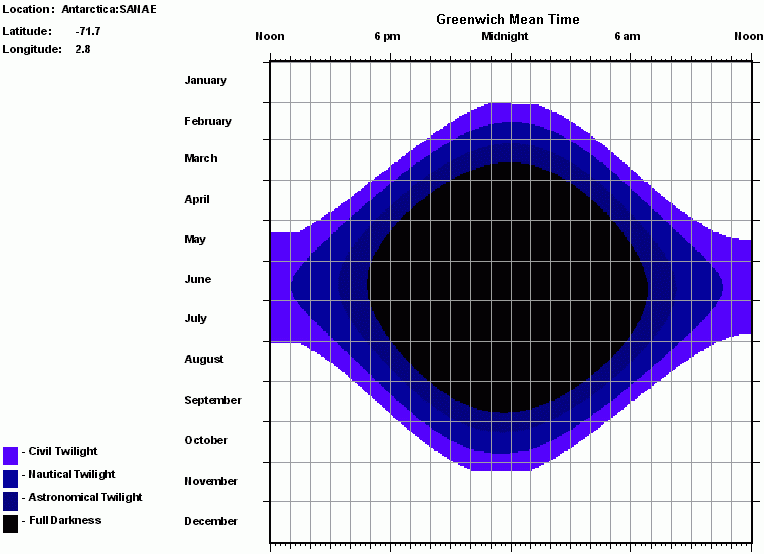
South Africa operates a scientific research station in Antarctica, known as SANAE. Being inside the antarctic circle, it experiences 24 hours of sunlight in midsummer, and 24 hours of night in midwinter. For nearly three months in midwinter the Sun does not rise at all.
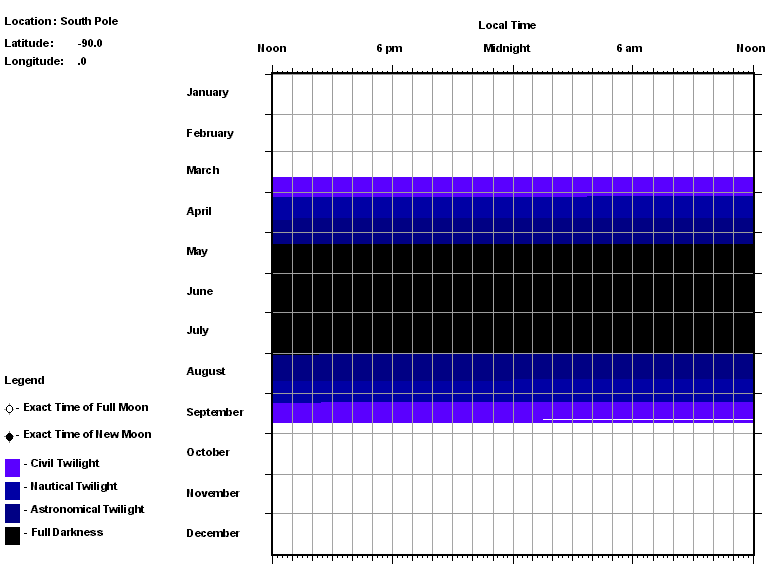
The most extreme contrast to the first graph, of sunrise and sunset at the equator, is provided by the South (or North) Pole, shown above. Six months of daylight, from Spring to Autumn, are followed by nearly two months of fading twilight, nearly three months of darkness, and a further two months of brightning twilight before the sun is seen again.
The images above were made using the free Windows program Dark Skies - download it from here. Note that its Summer Time calculations are correct for the northern hemisphere, not the southern. The Durban summertime graph above was created with some cutting and pasting rather than by setting summertime on in the program.